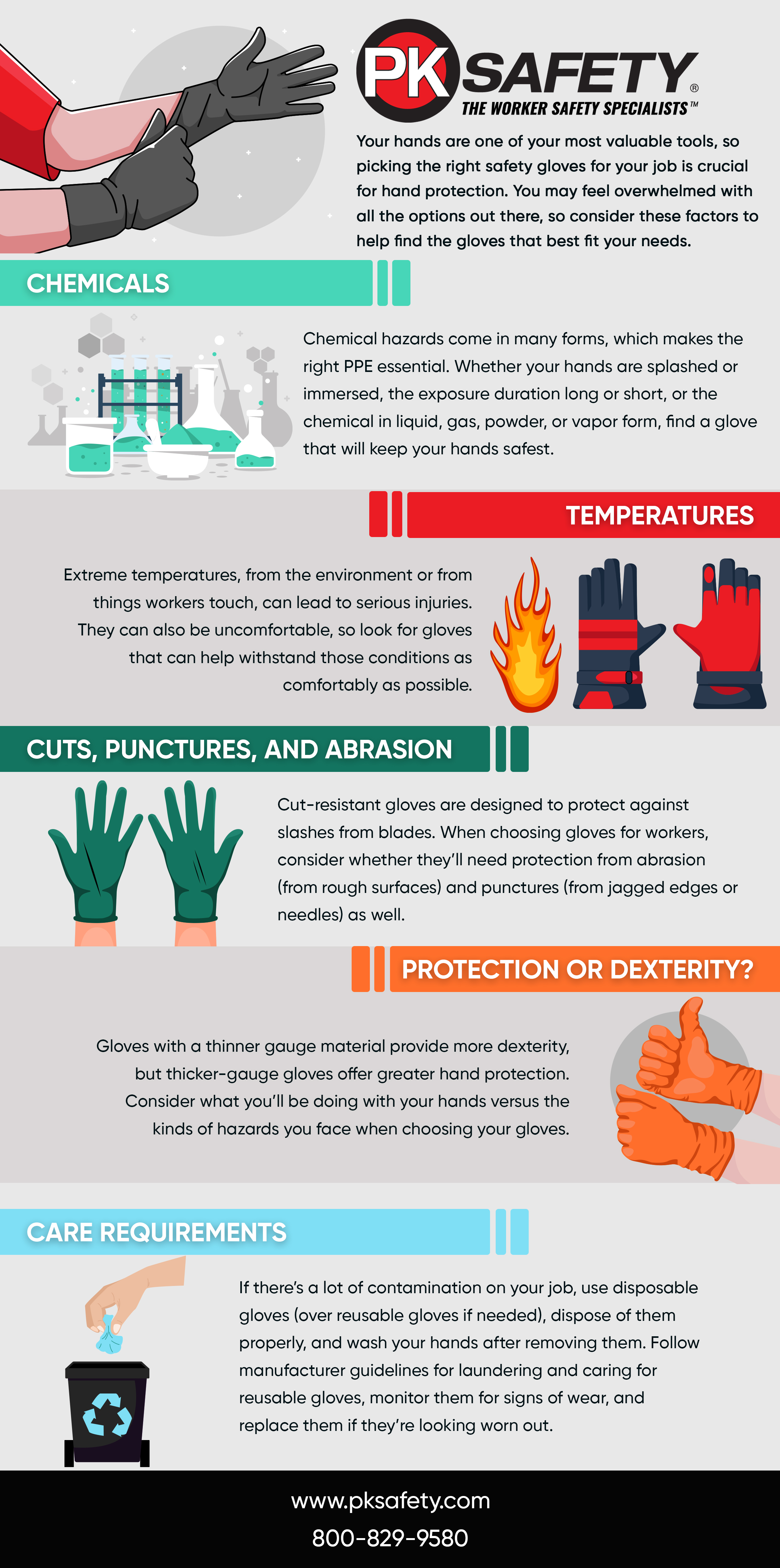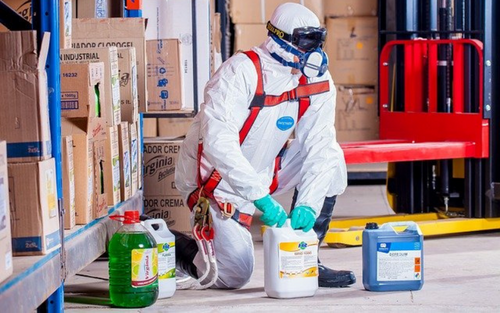How to Pick the Best Safety Gloves for Your Job
Hands are a valuable tool in nearly all workplaces, and proper safety gloves are an important piece of PPE on worksites where there are on-the-job hazards that put workers’ hands in danger. Wearing no gloves at all or the wrong kind of gloves can increase the risk of injury on a worksite. Luckily for employers, there have been many innovations in the materials and technology that produce gloves, so there are plenty of options available.
It’s not necessarily true that the most protective glove is the best choice for a job. Gloves that protect from many hazards tend to be more expensive and less dexterous, and depending on the application of a glove that’s less cut-resistant or impact-resistant will actually be more effective. Not all gloves are created equal, so here’s a quick guide on how to choose yours based on the requirements you should consider.
Chemical Protection
It’s essential to know all the details about any chemicals you’ll be working with. Some questions to consider when selecting chemical resistant gloves: Are the chemical hazards liquid, gas, powder, or vapor? Will workers be lightly splashed or totally immersed in a chemical? How long will they be exposed? What is the temperature of the chemical? How much permeation resistance will you require?
Extreme Temperatures
Especially hot or cold environments or objects require different protection. No glove is going to survive a dip in liquid nitrogen, but insulated, cold weather gloves can protect workers who are exposed to temperature extremes such as cryogenics, molten metals, fires, or other situations. Also, think about whether you’ll be sweating in these gloves.
Cut and Puncture Protection
Cut resistant gloves are essential in some industries, but so are gloves that protect against abrasion and puncture—and you won’t necessarily find or need all of those criteria in the same glove. Consider whether slashes (like from blades), abrasion (from rough surfaces), or punctures (from jagged edges) are a more common hazard and where on workers’ hands these hazards are likely to be experienced. These hazards will determine the type of material and potential reinforcements you’ll need.
Protection vs. Dexterity
All gloves need to fit properly for the greatest protection and control. Thinner gloves provide more dexterity, while thicker gloves with a heavier gauge offer greater hand protection. In a fast-paced work environment or a job where small parts and objects need to be handled delicately but there aren’t extreme laceration hazards, dexterity might be more important. Also, consider gripping wet, dry, and oily surfaces.
Care and Keeping
In jobs where contamination is likely, use disposable gloves (make sure to dispose of them properly and wash your hands after removing them). You might even need to wear disposable gloves under reusable ones depending on your application. If you’re using reusable gloves, inspect them thoroughly for signs of damage and degradation before use, replace them as soon as they start looking worn out, and follow the laundry instructions.
PK Safety Gloves and PPE
PK Safety experts are always available to help you find appropriate hand protection for your job or project. For answers to your product and safety questions, you can reach out online or by phone at 800.829.9580.

Recent Posts
-
Customizing Gas Detectors: Tailoring Solutions to Fit Your Unique Requirements
In today’s diverse industrial landscape, a one-size-fits-all approach to safety simply doesn’t cu …Jul 3rd 2024 -
10 Ways to Prevent Wildfires
You can prevent wildfires by extinguishing flames before you leave the worksite. Avoid practicing …Jul 1st 2024 -
ANSI/ISEA 138 Safety Gloves: Ensuring Hand Protection
The human hand is an anatomical masterpiece and arguably the greatest tool attached to our bodies …Jun 25th 2024





